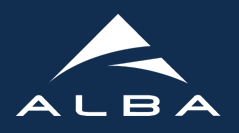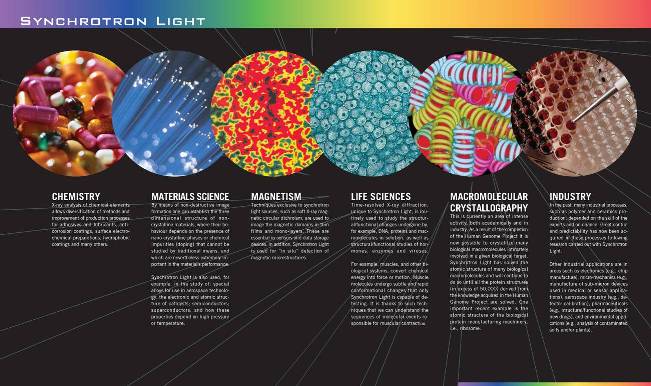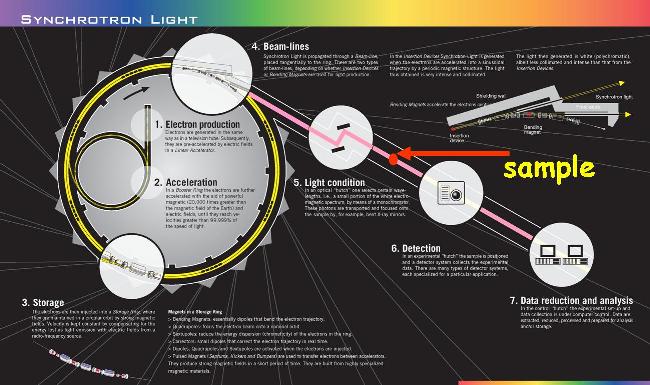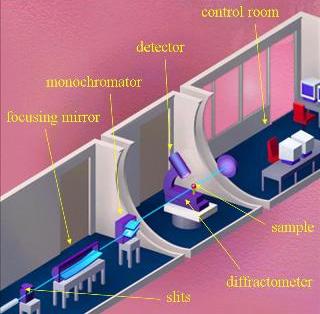What is a synchrotron?
A synchrotron is an accelerator of electrons. The electrons are maintained in a circular ring by magnetic field and produce X-Rays tangentially to their trajectory.
How does it work ?
Electrons emitted by an electron gun are first accelerated in a linear accelerator (linac) and then transmitted to a circular accelerator (booster synchrotron) where they are accelerated to reach a high energy level. These high-energy electrons are then injected into a circular storage ring where they circulate in a vacuum environment, at a constant energy, for many hours.
The electrons are accelerated and deviated in the storage ring by different magnetic components:
- Bending magnets: they allow to deviate the electrons by several degrees. This deviation results in an tangential emission of X-Rays by the electrons.
- Undulators: they force the electrons to follow an undulating trajectory. The X-Rays emitted by this ondulation will contribute to generate a much more intense beam of light than that generated by the bending magnets.
- Focusing magnets: they allow to keep the electron beam small and well-defined. Smaller and well-defined the electron beam will be, brighter the X-Rays. These magnets are placed in the straight sections of the storage ring.
The X-Rays emitted by the electrons are directed towards the beamlines situated tangentially to the storage ring in the experimental hall. Each beamline is designed for use with a specific technique or for a specific type of research. Experiments run throughout the day and night.
More about synchrotrons
You will find on the Daresbury Laboratory pages a presentation of what a synchrotron is. See also the ESRF pages for a interesting synchrotron's description including a virtual tour. More links related to light sources description are available on the lightsources.org website.




